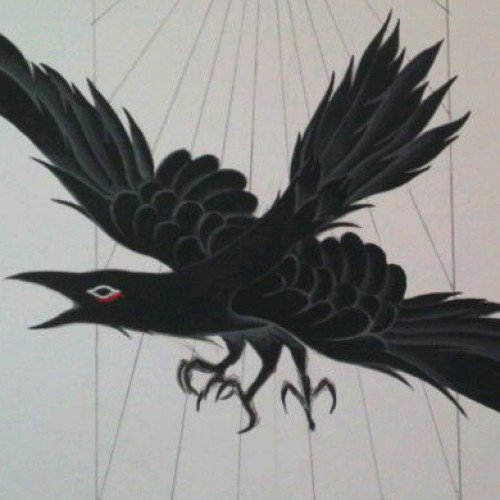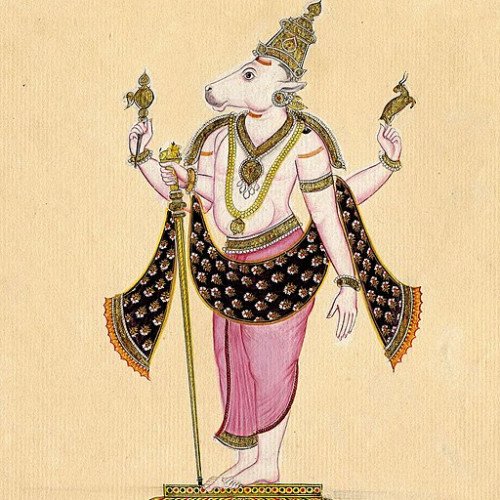Yatagarasu VS Nandi (mythology)

Yatagarasu
In Japanese mythology, this flying creature is a raven or a jungle crow called Yatagarasu (八咫烏, "eight-span crow")[16] and the appearance of the great bird is construed as evidence of the will of Heaven or divine intervention in human affairs.[17] Although Yatagarasu is mentioned in a number of places in Shintō, the depictions are primarily seen on Edo wood art, dating back to the early 1800s wood-art era. Although not as celebrated today, the crow is a mark of rebirth and rejuvenation; the animal that has historically cleaned up after great battles symbolized the renaissance after such tragedy. Yatagarasu as a crow-god is a symbol specifically of guidance. This great crow was sent from heaven as a guide for legendary Emperor Jimmu on his initial journey from the region which would become Kumano to what would become Yamato, (Yoshino and then Kashihara). It is generally accepted that Yatagarasu is an incarnation of Taketsunimi no mikoto, but none of the early surviving documentary records are quite so specific.[18] In more than one instance, Yatagarasu appears as a three legged crow not in Kojiki but in Wamyō Ruijushō. Both the Japan Football Association and subsequently its administered teams such as the Japan national football team use the symbol of Yatagarasu in their emblems and badges respectively.[19] The winner of the Emperor's Cup is also given the honor of wearing the Yatagarasu emblem the following season. Although the Yatagarasu is commonly perceived as a three-legged crow, there is in fact no mention of it being such in the original Kojiki. Consequently, it is theorised that this is a result of a later possible misinterpretation during the Heian period that the Yatagarasu and the Chinese Yangwu refer to an identical entity.
Statistics for this Xoptio

Nandi (mythology)
Nandi (Sanskrit: नन्दि, Tamil: நந்தி, Kannada: ನಂದಿ, Telugu: న౦ది, Odia: ନନ୍ଦି) is the gate-guardian deity of Kailasa, the abode of Lord Shiva. He is usually depicted as a bull . The decorated bull gangi reddu is the tradition of ancient south india. During the festival of pongal the bull is decorated and performs of stunning ‘feats’. “An ox can dance to the tune of its master’s nadaswara, it can nod at his command or shake its head to indicate no, kneel down and prostrate or bow when asked to. You can often see a Gangireddu stand on its master’s chest and bow in complete humility, appreciating a patron who has bestowed money or food on them. The ‘Dance with the Bulls’ series showcases the feats they perform,”.The tradition of Gangireddu is associated with saivism and grama devata or para sakti honored as universal energy field and attributes. Nandi is a Dravidian root word (kui) which was taken to prakrit and sanskrit and translates to happiness or joy. According to Saivite siddhantic tradition, he is considered as the chief guru of eight disciples of Nandinatha Sampradaya, namely, Sanaka, Sanatana, Sanandana, Sanatkumara, Tirumular, Vyagrapada, Patanjali, and Sivayoga Muni, who were sent in eight different directions, to spread the wisdom.The Cham Hindus of Vietnam believes that when they die, the Nandi will come and take their soul to the holy land of India from Vietnam.